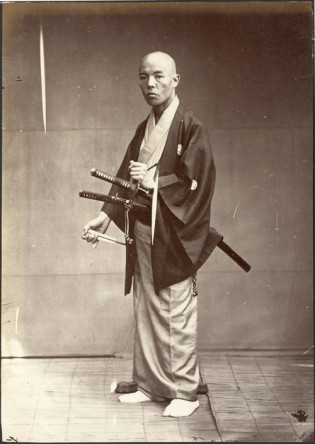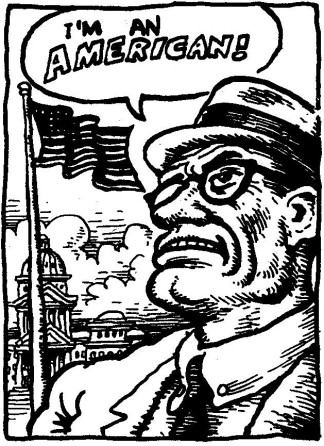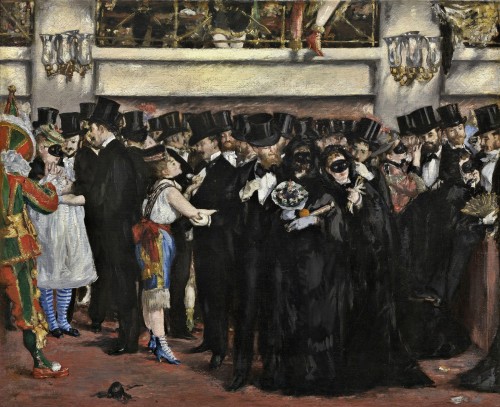
Gary Fabian Miller
“It’s one of my favorite Darwin quotes—”He who understands baboon would do more toward metaphysics than Locke”—scribbled furtively in a notebook between visits to the London Zoo in the summer of 1838. Twenty-one years would pass before On the Origin of Species would shock the world, but Darwin already knew: If man wanted to comprehend his own mind, he’d need to train an unflustered gaze into the deep caverns of his animal past.”
Oren Harman
“Make no mistake, abstract art is a form of mysticism.”
Robert Motherwell
“Thus in doubting and liquidating the object, the modern artist shows his self-doubt and feeling of being liquidated by the world. He projects his own dissolution into the object, defending himself against narcissistic injury by injuring the object. He destroys the world of things because he feels like a thing destroyed by the world. He destroys reality because he feels unreal.”
Donald Kuspit
“Capitalism is not only a system of exchange but also an epistemological factory producing knowledge that conforms to the laws of profit as surely as scientists conform to scientific laws in the production of scientific knowledge.”
Michael B. MacDonald
If one examines the entire cultural output of Hollywood film and TV, as well as mainstream news outlets, and major equity theatres across the U.S., you will see an almost shocking intellectual enervation. The prose is infantile and puerile, and the images are increasingly fungible, bland, and without distinction. From MFA fiction programs to Hollywood scipt labs, the stuff is utterly forgettable. Now, it is always important to note that there are exceptions, and it is even more important to draw attention to those exceptions. There are terrific film directors emerging from places as diverse as Mexico, Ethiopia, and Ireland, and there are several remarkable young photographers, and quite a few memorable fine artists, but increasingly few are from the U.S. There are even, rarely, a couple mainstream products from Hollywood worth mentioning. Perhas three out of thousands. Now with that qualifier out of the way, it is worth noting how stark the class antagonisms are in mainstream cultural work today. Rest assured if Hollywood buys the rights to a Danish, Australian, or French TV show, with the intention of remaking it in an English language version, that the class markers will change. The original working class characters will 100% of the time become white collar and affluent. One hundred percent. But this absolute terror that the underclass holds for Hollywood is less expressed in topic or theme, though that is certainly true, than in who exactly gets to make these shows and films.

Sui Jianguo
One of the reasons for the deadness of U.S. television is that the numbers of people allowed to make it by studios and networks is shrinking, narrowing, and at this point there are maybe a dozen show creators out there. Occasionally someone is brought in from the U.K. The point is that the world depicted in U.S. film and TV is a very narrow world. Very. But without beating that dead horse much longer, the real issue is that audiences are being further lobotomized. Audiences suffer a strange sense of dislocation I suspect. They do not see themselves in U.S. television. They don’t expect to, of course, because they haven’t for forty years, but the endless failure to see their own life, their own reality on screen has to lead to some sort of psychic fault line. Nothing quite lines up, because mimesis becomes a false mimesis.
But not only that, not only does the mimetic process halt, but more importantly perhaps, at least on a day to day level, and certainly more important politically, is that in post industrial post modern society, as Donald Kuspit put it; “…it has become avant garde to be traditional.” Now part of this, on a more superficial level, is just simply the result of irony. Everything is ironic. But irony rose to this level because of this psychic dislocation. The society of domination had begun to clear away differentiation and to reproduce the same. The new is the same, as Adorno liked to say. He also said that the avant garde is reduced to a label. But if one looks at U.S. television right now, there is such wholesale stupidity on display that it’s hard to actually imagine how certain things, certain shows, were made. Who greenlighted that script? Who hired that director? Did nobody involved notice the turgid dialogue? Did nobody notice the cliches in the dialogue? And then one often hears interviews with various producers and executives and they will say things suggestive of knowing all this. And yet, nothing changes. It fails to change because there are economic imperatives at work, Harvard business school bean counters, who work with the tragically stupid people who buy advertising time, and together they manufacture a sort of mandate that dictates a show shall be successful…WILDLY successful, within the first third of its inaugural season. Or get cancelled. Instant success. But how does one determine success? The answer is, almost exclusively by Nielsen Ratings. So allow me a brief digression into the world of ratings. In the 1920’s a market analyst named Arthur Nielsen decided to find a way to inform advertisers about the numbers of people listening to radio. It was always about advertisers, from its inception. In the parlance of Hollywood, Nielsen notes *shares*, essentially determines the percentage of people at any particular time watching a particular show. If a show is said to get a three share, then 3% of available TV sets were tuned in to that show. The Neilsens as almost everyone in Hollywood knows (but mostly won’t say) are woefully obsolete. Almost nobody watches TV, at least that I know, on a set at the time of original broadcast. Second, remember that they do not actually care if you watch a particular show, they only care about what commercials you were watching. And ever since one could record shows on DVDs, let alone now, that measurement has been open to a lot of doubt. Second, Nielsen just this year admitted a *glitch* that caused faulty numbers for a few months. Oops. The thing is, the original idea for Nielsen was based on a weird post war fantasy American family. A white suburban family. A *Nielsen Family*. In other words if you were a gay bachelor who never concerned himself with what breakfast cereal to buy, you were not counted. Today if you are a transgender loner watching shows on your tablet, you do not count. If you watched with friends, single women, in a community center, you do not count. Nobody counts or counted but Ozzie and Harriet and Rick and David. Now today, I am certain most companies that buy advertising minutes know that Nielsen doesn’t mean much, its more what kind of purchasing and loyalty goes on behind a certain brand. This is particularly true of cartoon spin offs (Marvell for example) in which Nielson is relatively meaningless even according to their own criteria. And now with Hulu, and Amazon, and Netflix, the entire paradigm mostly is just obsolete. People, even in just the last six or seven years have changed viewing patterns, and access new platforms, and devices, and its doubtful that the cultural importance of television has lessened. What has lessened is the relevance of the Nielsen model. Still, though, networks cancel shows because of low ratings. Its just easier, and there is also a HUGE incumbent industry in-place that is reluctant to change the current business model. It is changing, though. And part of this connects to the technology of surveillance. The more rapidly the population becomes fully complicit in its own submission to the Orwellian *Total Information Awareness* model of complete tracking of consciousness, the more obviously this old model seems pointless. But if there is ever a service that allows a certain glimpse of how sharply the public’s sense of entertainment has shifted, its to read Nielsen figures. Duck Dynasty, for example, was one of the top rated shows for 2014, and even its reruns out point most new network offerings. Scripted drama now rates lower by something like 30% than it did even five years ago. Reality TV has entrenched itself as the background noise of daily life for millions of people. These shows, everything from Pawn Stars to Sex Made Me Go to the ER, to Rocky Mountain Bounty Hunters are the dime novels or penny dreadfuls of today. Tabloid TV. The problem though is less Rocky Mountain Bounty Hunters than it is what passes for prestige product today.

Willy Bo Richardson
But the basic class relationships won’t change, nor will the dynamic between labor and ownership. As the creeping Kafka-esque bio-monitoring of daily life progresses, the more segregated the classes. The poor are crappy consumers, ergo they don’t matter. The Ozzie & Harriet white family, now updated to Pacific Palisades or Brentwood, or Brooklyn Heights, is the ideal family to represent reality. And that is what is insanity producing. Mainstream media, Hollywood, are essentially flattering the rich and flattering authority. Shows either validate the police or they justify being rich. And increasingly the people making shows are of a certain sensibility. One of de facto white privilege, of expensive education, though rarely are any what one would describe as intellectuals and in fact there is a marked anti intellectualism in play, and they are politically reactionary.

Felice Beato, photography. “Samurai, Japan,”. 1860 apprx.
The younger executives I met during my time in Hollywood were to a man very right wing. They all of them, the men anyway and it was about 85% male, were suffering masculine anxiety. So, it is worth pondering exactly how far the fascination with Super Heroes actually goes in the U.S. population, or, more likely, if it isn’t something keenly popular with the white geek studio honcho and young Hollywood film school grad. So the public gets a disproportionately high number of Marvell comic book films and shows. Super Heroes, comic books, are mostly white centered. They represent a white world view, and a reactionary one and one aligned with militarism and totalitarian thinking. Never mind Blade and Black Panther, or Storm, the black super hero in the context of comix is an anomaly.
But back to the Nielsen white family, to the creators of mass culture. Those privileged white men who manufacture cultural screen reality are not thinking much in political terms. They are all rich for one thing. But second, the very idea of an avant garde, and artists of genuine radical potential, is pretty much obsolete. The radical artist that lasted into the 1960s, maybe the 70s, is as obsolete as the Tazmanian tiger. What is interesting is to imagine the corrective that the 1960s was, and how R.Crumb and underground comix suddenly punctured the white center. The alternative to Batman.

R. Crumb illustration.
There is a curious residue, though, from the sixties, that is relevant to mass culture today. This has to do with ideas of sexuality, but also of mastery. Donald Kuspit has great essay on Manet in which he positions Manet in relation to Titian and Giorgione. Suggesting Manet replaced what he found a saccharine love in Titian with his own earthy vision of lust. In a sense there was an aspect of Manet-like corrective to sexuality in the sixties. It was fleeting, however. Manet, as Kuspit writes; “Manet undoes everything in Giorgione and Titian, where Giorgione shows and Titian implies, male mastery of woman, and with that of sexuality, Manet shows this mastery crumbling, and the roles of man and woman slowly but surely reversing…”. I remember, in the late sixties, the sense that erotic adventure was and should be a daily activity. I remember that feeling, people flashing peace signs, passing joints to strangers on the street, or picking up hitchikers. In San Diego one summer I remember getting a ride in a VW bus (cliche alert) and being handed a joint, and then finding a nearly naked girl climbing on top of me. This did not seem, nor was it, unusual. That was there, and it was fleeting. There is no question it began to erode as soon as it appeared. For the forces of repression are strong. And it’s not that people have less sex today, though they well might, but it was the quality of those encounters. But that was a revolutionary moment, and one that evaporated too quickly for anyone to fully grasp the implications. Marcuse said we’ve no idea what a non-repressed society would look like. And that was exactly the issue. Nobody had enough time to process it.

Edouard Manet, Masked Ball at the Opera, 1873.
Manet’s conflicted feelings about mastery extended to his actual handling of paint, as well. The cynical flatness did not allow his surface hostility any reconciliation. Manet damns his characters without fully providing for even painterly redemption. It is worth contemplating the implications of disappearing, as it occurs in visual art (European and North American) in the late 19th century on through WW2, and beyond. The very term disappearing suggests something without closure, without ritual reunification. It also suggests a death squad genocidal top down industrialized level of death. Manet was disappearing history more than negating it. Bataille, of course, saw Manet freeing visual art from the ‘ancien regime’. Perhaps, and Manet’s most overtly political paintings (Execution of Emperor Maximilian) are in some sense effective historical illustration. His Masked Ball at the Opera, which Id nominate for his best painting, is also the most historically evocative. It is also where Benjamin and Baudelaire intersect, and it raises issues that Kuspit in his essay digs into quite exhaustively. For the purposes of this post, the germane issue is what Manet himself said about the men in black coats that appear in so many of his paintings. He said; “…the black coat is the necessary garb of our suffering age…the symbol of perpetual mourning.” The black one sees in Manet, in the Masked Ball painting, or in Music in the Tuileries, is the black that returns in Ad Reinhardt, and in Rothko, and Federle. I see it in Hurvin Anderson’s magnificent ‘Black Street’ painting. In Shakespeare the darkness, the black of storms, travels from early glimpses in The Rape of Lucrece, to Iago to Macbeth to The Tempest. It is the same mourning black, and it is that face that is framed by an impossible Stygian black, as in Jack Leigh’s oyster man. Or that deep stained black that Rothko explored, and that one sees in Sui Jianguo, and it is the eclipse Gary Fabian Miller repeats over and over. The face of the samurai in the Beato photos, is somehow a face since disappeared. The samurai looks at the camera without the 20th century awareness of and understanding of optical instruments. That face, the look that doesnt quite *grasp the camera* or its implitcations, is no more, it is gone, too.
Manet, almost as much as Baudelaire, set the tone for European modernism. Set the tone for the precursor period anyway.

Jack Leigh, photography. ‘Oyster man, night’.
mind here.
“Functionalism, going artistic, promotes this trend. Shops and offices open themselves through huge glass windows and expose their personnel; inside, high counters and non-transparent partitions are coming down. The corrosion of privacy in massive apartment houses and suburban homes breaks the barrier which formerly separated the individual from the public existence and exposes more easily the attractive qualities of other wives and other husbands.
This socialization is not contradictory but complementary to the de-erotization of the environment. Sex is integrated into work and public relations and is thus made more susceptible to (controlled) satisfaction. Technical progress and more comfortable living permit the systematic inclusion of libidinal components into the realm of commodity production and exchange. But no matter how controlled the mobilization of instinctual energy may be (it sometimes amounts to a scientific management of libido), no matter how much it may serve as a prop for the status quo – it is also gratifying to the managed individuals, just as racing the outboard motor, pushing the power lawn mower, and speeding the automobile are fun. This mobilization and administration of libido may account for much of the voluntary compliance, the absence of terror, the pre-established harmony between individual needs and socially-required desires, goals, and aspirations. The technological and political conquest of the transcending factors in human existence, so characteristic of advanced industrial civilization, here asserts itself in the instinctual sphere: satisfaction in a way which generates submission and weakens the rationality of protest. The range of socially permissible and desirable satisfaction is greatly enlarged, but through this satisfaction, the Pleasure Principle is reduced – deprived of the claims which are irreconcilable with the established society. Pleasure, thus adjusted, generates submission.”
Marcuse
One Dimensional Man

Hurvin Anderson
Manet was, in a sense, the unreliable narrator of daily life. For it was the creep of cynicism, inching along even in the flatness of the compositions, and in the emotional flatness of his subjects. But is this just inevitable? The hedonism becomes sober minded, and yet, as artist it was Manet who made clear that the pictures he painted were pictures, not reality. That was the paradox, in a sense. I think what has happened in the post modern epoch, at least over the last thirty years, is that art has been de-conceptualized. And by art I mean in any medium. Adorno thought that philosophy found evidence for itself, for its ideas, in art. The practice of art created that space for discovering something about ourselves, but often through the negation of those ideas or concepts that it simultaneously created. Artistic expression, or practice operates (though mimesis primarely) in a dialectic of both negating and reconciling, and by reconciling and then negating. Both operations go on and at the same time. A context is destroyed, the object made heterogeneous, and at the same it is recontextualizing. But the reconciling or recontextualizing is in accord with a new position that is ordinarily invisible. The ordinary is made suspect, while at the same time pointing toward something in which such suspicions cannot operate or make sense. Today, almost all corporate entertainment contains a obligatory *sex scene*. These are the repressively de-sublimated scenes shot in soft focus (or not, for the ten p.m. shows) and in which varying amounts of nudity is shown. They are stunningly alike, all of them. The editing is almost identical, and while the duration varies, it varies according to a limited number of platforms; meaning long, moderate, and short. They are, none of them, erotic in the least. They are not meant to be.
The predictability of corporate produced TV drama is, by virtue of that predictability, reaffirming the context that is manufactured by the state, by bourgeois institutions, and it cannot but then be anything other than sentimental kitsch of some sort. Now, the destruction of concept, or the de-conceptualization of culture is achieved by a first register of complete affirmation and reinforcement of the idea of conceptual organization. This is the instrumental logic at work in Western society, and it is total. Capitalism manufactures a narrative and grammar that affirms itself. Any art that participates in this manufactured reality, without at the very least raising the issue of its negation, let alone negating it, is just kitsch. It is the erasing of the unconscious. The history of community and tradition is what is denied, and hence it disenchants, it denies the mimetic cycle, and by extension it denies the audience, the viewer.

Stefan Banz, installation, Wurtgenburg.
J.B. Bernstein writes, in an essay on Abstract Expressionism;
“This continuation of disenchantment, the indefinite recruitment of ever more domains into the grasp of an indifferent system of commensuration, reaches down into everyday life and tendentially robs it of subjective qualifications.”
Adorno linked disenchantment to irony. And irony is a part of a generalizing of experience. Bernstein is right when he suggests that the universalizing of the mechanisms and means of advanced Capital, rather than just the ends (and here one might introduce Freud and the Pleasure Principle) has robbed the individual of those ends. The ends are subsumed by the means. That psychic dislocation I posited earlier is to be found in this world marked by a universal blandness, albeit a blandness that is reflective of our own blandness. The denuded inner life of the subject is projected out by these generalized mechanisms and means, by instrumental logic that is geared to satisfy and titillate, but in fact stares back at us as a death’s head. As Bernstein says, “it eliminates subjectivity from the subject”.
Michael B. MacDonald writes;
“…Capitalism is no longer simply operations of production that occur on the marketplace and the factory floor, it is the production of capitalist society, a social factory. As we have learned from Italian autonomism the factory worker of capitalism is now a social worker, making social life with products, cultural workers producing capitalist-cultural life within culture centres.”

Mark Rothko
Mass culture today operates as social machine, and its primary export is disenchantment.
Adorno said of Beckett: “The shabby damaged world of images in Beckett is the negative imprint of the administered world. To that extent Beckett is realistic.”
Today’s audience struggles with the mandate to keep in view a clear idea, concept, of him or herself. The constant repetition of propaganda, or historical lies, and the constant shaming and ridicule of anyone who questions these stories creates enormous anxiety. And great art is that which evokes buried terrors and reconciles them through new experience. Adorno said “the mythical terror of beauty extends into artworks as their irresistibility.” And Bernstein, in his really excellent essay on Ab Ex, cites a quote of Clyfford Still describing the work of Mark Rothko:
“When they are hung in tight phalanx, as he would have them hung, and flooded with the light he demands that they receive, the tyranny of his ambition to suffocate or crush all those who stand in his way becomes fully manifest…It is not without significance, therefore, that the surfaces of these paintings reveal the gesture of negation, and that their means are the devices of seduction and assault.”

Felice Beato, “samurai, 1866”.
This becomes an aggression, an expression of the dominated world. I suspect the abstract expressionists were the last sincere painters. Pollock could never be ironic, nor Rothko or Still or Kline. The problem with mass culture today is that it discourages attempts to sever the mechanisms that disappear subjectivity. Restoring autonomous subjectivity, as Amy Buzby suggests, is the road to resisting domination because the subject today is encouraged to introject and reproduce his or her own domination. The mechanisms are universilized, and Nature becomes abstract and anodyne. At the same time, the representation of Nature is framed as a kitsch criminalized nature. Killer storms must be fought off as if they were terrorists. The narrative of conquest over nature is repeated obsessively.

Gospel According to St Matthew (1964). Pier Paolo Pasolini, dr.
In Adorno and Horkheimer, they write: “..the history of civilization is the history of the introversion of sacrifice– in other words, the history of renunciation.”. Under today’s hegemonic mass culture sublimation is in service to an adaptation of self erasure. The disappearing subject is one most easily shaped into an effective consumer, but also, more, today into a machine for social labor. The manufacturing process for mass culture is controlled by wealth, by the elite stratum of producers who themselves are psychologically children. The Hollywood producer as sadistic child. But a cunning very effective and efficient child. Only one whose own subjectivity is compromised. Adorno in his desire to explicate nonidentity between subject and object never gave enough importance, I suspect (and I think Buzby hints at this) to how the crowd is to be organized. This may well be the failure of the 60s. The tyranny of subjectivity, at the same moment subjectivity was being impoverished.
The face of the android is now the ideal of beauty. The botoxed and liposuctioned and cosmetically altered smoothness that reflects an inner void. The Nielsen ratings measure consumers; and if you do not reach that threshold you are not counted. The infantile entertainments of mass culture have usurped artistic practice.
“He who is not malign does not live serenely but with a particular chaste hardness and intolerance. Lacking appropriate objects, his love can scarcely express itself except by hatred for the inappropriate, in which he admittedly comes to resemble what he hates.”
Adorno

Alan Sekula, photography.
The culture of shaming and snitching. The suffering that found expression on the surface of canvases or on that stage that invited mimetic retelling of history, collective or personal, finds its only outlet in scapegoating exercises that feel more reflex than deeply believed, for nothing is really deeply believed. The persistence of a need for genuine culture; meaning one in which artworks repudiate the domination of advanced Capitalism, is written in the petty and snide shaming of the collective. The pathological insistence on hygiene, both material and optical, and in the embalmed non-emotions called forth by endless recycled kitsch, marks out today’s popular audience. The psychological truisms directed at constructing the model personality, predicated on white centered discourses, on the validity of the endless utterly pointless bureaucratic activities of self validation, the countless cards and passwords and ID codes that prove one exists, when everyone knows they dont, are like a meta Nielsen rating system. Surveillance is willingly accepted, authority is embraced even as it humiliates. The dominated self can only project outward in an effort to dominate others. The discomfort caused by works like Pasolini’s, is that they return the gaze accustomed to blank empty space. Being looked at is, today, the reality under mass surveillance, but the depersonalized CCTV lens has now replaced the gaze of the mother or friend or even child. The security camera provides an intimacy of technology, and one in which history has no role. Allegory doesnt exist on CCTV. Only the knowledge that one can endlessly perform the role of self in one’s own movie.
“The unconscious is the true psychic reality; in its inner nature it is just as much unknown to us as the reality of the external world, and it is just as imperfectly communicated to us by the data of consciousness as is the external world by the reports of our sense organs.”
Freud

Thank you. Another wonderful essay. I wanted to thank you, by the way, for recommending Dao de Jing: A Philosophical Translation. Reading that book has given me great guidance in how I should approach this life. I honestly can’t thank you enough for mentioning that book. It’s helped me leave my years of wandering the forest in a daze.
With regards to disenchantment, I feel very connected to your use of that word. The cruder way I’ve thought about it is mass commercialisation. Everything will be bought and sold, nothing is sacred. Nothing is magical. Plastic and darkness and fear surround people and it penetrates their being. I am surrounded at work by the very white upper class people you speak of. Their fear of not getting the 5 bedroom house with a large garage and garden in the back is not even underneath the surface (I have an funny story about one person’s reaction to Occupy to illustrate that, but can’t tell in a public forum). That is the surface and the depth of it all. I know one man who walked away from that. He no longer drinks to excess and is happier. He has gone back to reading his dissertation and going to university lectures because he likes it. He started reading Tony Benn as well! How strong one must be to reject the culture and the people. To know that it is killing you inside yet it is pounded into us that THIS IS THE ONLY WAY. THERE IS NO ALTERNATIVE. You lose so much, but gain even more. A new beginning and all that entails.
Back to disenchantment, the question for me has become how to re-enchant my life, my relationships, my surroundings. I’m following different threads to see what works for me. How does one step away from the nightmare whilst still living in this world? I don’t wish to hide or use platitudes. This sort of thing must be different for every person, isn’t it? To overcome the compromised subjectivity and to see the connections, the life underlying it all, the real magic in this world, there is no one size fits all way. It gives me great peace to know that this means so much is going to change in my life…
And on another note – I’ve only seen Salo from Pasolini, which is probably the one to watch after several of his other films. It felt like something that built upon the rest of his work. Even then, I felt slapped awake. Nothing was “titillating”, but it was filled with so much emotion I still think about that film months after having watched it. Do you have any specific films of his to recommend?
Lastly – you had recommended The Divide a few months ago as well. My partner and I watched that in a week. It was riveting. We were amazed it got on TV at all. Thank you for recommending that!
thanks M. Yeah, I think I had a similar reaction to The Divide in terms of a sort of shock that it was on the air. I kept thinking something would happen to change my mind. But see, the show could get no sponsers, which is really the crucial factor. An anti death penalty show is not a commerical idea.
As for nothing being magical; I increasingly feel this, the ersatz quality of everything. The propaganda, and lying….and the manipulation. The endless endless endless manipulation./ Pussy Riot write a song appropriating Eric Garner’s death in an effort to spew more anti russian state dept PR. Its that sort of thing and it makes people crazy. On the left I know people who increasingly shrink inside this cocoon of discourse with others that share their opinion. On the right, its blatant madness. But in all cases there is a weird disconnect. Because nothing is enchanting or wonderous. Thats how it feels.
The issue with so many people on the left is they seem to be fighting a phantom enemy, which might broadly be termed *elitism*. Now I don’t want to write a book, but I sense that so many on the left are under the impression that people like Kuspit and Adorno are cut from the same cloth as John Simon or Allan Bloom. They can’t seem to tell the difference. In short, it stems from this idea that “high art” is an extension of ruling class ideology. Of course, this is all very complex, and I think I’ll struggle to consolidate my thoughts in a forum post such as this one. But what I’m getting at is they don’t seem to realize is their enemy, “the establishment” thinks more like them than they realize. The left doesn’t realize it’s part of the establishment and that its thinking doesn’t threaten the ruling class in any way. So the whole idea of associating a Kuspit with a Simon is merely a symptom.
But what I’m getting at is they don’t seem to realize their enemy, “the establishment” thinks more like them than they lead themselves to believe.*
“How do we mitigate the financial risk without a white male lead?”
http://www.jamieford.com/journal/2014/4/7/why-hotel-on-the-corner-of-bitter-and-sweet-will-never-be-a.html
John, any comments on the Oscars? There was an article in today’s NY Times arguing that they need to get more commercial to attract viewers.
@remy…….yeah, there is a truth in that.Kuspit gets a lot of criticism that seems unwarranted. And @don……hahahahahahahahahahahahahaha. I mean i dont watch, but reading about it kinda makes me glad I don’t.
John, I’ve started reading your blog,it’s difficult but well worth my time and I like it.
I have seen trailers for some Ethiopian films recently but who are these Irish and Mexican filmmakers? I’d like to see some of their work.
Thanks